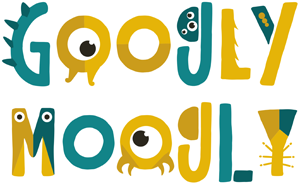Are you looking for an exciting new way to get employees involved and engaged in your business? If so, creating an employee engagement journey map might be the answer.
This innovative and creative approach allows you to bring together a range of different initiatives that boost morale, increase productivity, and reduce turnover – all while making your workplace more pleasant for everyone! With this comprehensive guide, we’ll walk you through each step of the process in easy-to-follow language, providing tips along the way so that you can create an effective employee engagement journey map tailored to your specific needs. So let’s get started!
What is An Employee Journey Map?
An employee journey map is an invaluable tool for businesses that strive to understand their employees’ needs and experiences. It provides a holistic view of how an employee moves through the different stages of the employment process, from recruitment to onboarding, development, and retention. By mapping out each stage in detail, businesses are better able to identify potential areas for improvement in order to provide a more rewarding and enjoyable experience for their employees.
The Benefits of Employee Journey Mapping
Employee journey maps offer numerous benefits to businesses. Firstly, they provide insight into how employees interact with various elements of the workplace – such as policies and procedures – which can then be used to tailor them in order to improve employee engagement and satisfaction. Secondly, they allow employers to identify weaknesses or gaps in their current approach that could be addressed in order to optimize processes for both employees and employers alike. Thirdly, creating an employee journey map offers a proactive approach that enables employers to anticipate issues before they arise and therefore reduce the risk of costly mistakes. Lastly, by identifying areas of improvement at each stage of the process, businesses are well-placed to create strategies aimed at improving productivity, reducing costs and increasing profits.
Setting up an Employee Journey Map
The steps involved in creating an effective employee journey map vary depending on the business’s size and industry but generally include:
1. Identifying Key Stages:
Firstly, employers must define all stages throughout the entire employee lifecycle – from recruitment right through until termination – in order to build a comprehensive overview of employee experiences across all departments within the organization.
2. Analyzing Data:
Employers must collect data relevant to each stage (such as surveys or interviews) which should then be analyzed using techniques such as segmentation or text mining in order to gain deeper insights into how employees feel about their roles at each stage of their employment journey.
3. Designing Solutions:
Once enough data has been collected it should be used alongside other methods (such as focus groups) to design solutions which address any gaps identified at each step along the way (e.g., providing better onboarding materials).
4. Implementing Strategies:
After designing solutions businesses must ensure that all changes are implemented correctly via communication plans and training sessions; this helps ensure smooth transition between stages while also ensuring that all stakeholders understand any changes made along the way.
Personas For Employee Journey Mapping
Personas are useful tools when creating an effective employee journey map as they enable employers to gain further insight into how individual employees interact with certain processes at key points during their careers by offering more detailed information than traditional demographic data alone can provide – such as values or ambitions – allowing them to build tailored strategies based on real-life scenarios rather than assumptions alone. In addition, personas can help uncover potential problems quicker than relying solely on traditional analytics approaches thereby enabling businesses to adjust quickly if necessary and minimize disruption caused by unforeseen issues arising during this period
An employee journey map is a detailed visualization of the steps your employees take to complete their work tasks. By plotting out this process, you can identify areas where things are going well and pinpoint problem areas that need improvement.
There are many benefits to creating an employee journey map, including increased clarity and communication among team members, improved efficiency and productivity, and reduced frustration levels. If you’re interested in learning more about how you can set up an employee journey map for your business, contact us today. We would be happy to chat with you about your specific needs and offer tailored recommendations.





